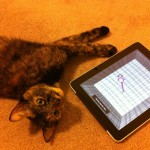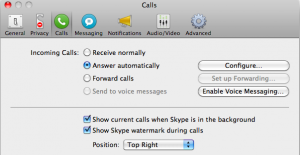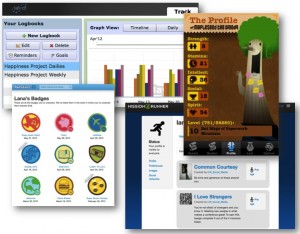I have been thinking about starting a series of posts called “N of One,” where I observe or interview one person about doing something interesting and report the results here. However, today is my blogging day and I find myself alone with my cat, so it seems like my first “N of One” is going to be about Animal-Computer Interaction. In this episode, Chewie (actually, Chui, but no need to be formal here) experiments with several different cat games for the iPad.
So, here we go.  (1) We started out with the free version of the GameForCats laser game. I already knew that this is a game she would enjoy and indeed, she gleefully scored several points in the game. Rating: 10/10!
(1) We started out with the free version of the GameForCats laser game. I already knew that this is a game she would enjoy and indeed, she gleefully scored several points in the game. Rating: 10/10!
(2) I upgraded ($1.99) to the full version which unlocked the mouse and the butterfly games, but Chewie was freaked out by the loud noises both animals made when caught and chose to observe the movement from afar instead. Rating: 4/10.
(3) Chewie got bored with watching the iPad and found that my wallet was more fun to bat around.
(4) To get her attention back, we downloaded the app Cat Games for $0.99 ($0.25 to Humane Society). Unfortunately, all the games in this app failed to get Chewie engaged in interacting. The laser and tarantula games didn’t give any feedback when you caught them. Some of the other games actually made dog sounds, which spooked her. The only part that she liked was the cat meow that was the chime whenever I interacted with the interface. Rating: 5/10.
(5) Next, we downloaded Cat Toys Lite (free). This did get Chewie’s attention again. The mouse made funny sounds, that weren’t too loud. Rating: 8/10.
(6) Chewie kept nudging the iPad up with her nose. I think she thought that the mouse was actually underneath.
(7) Okay, so the first app seemed to be the clear winner, but I wanted to make sure that this wasn’t just Chewie getting bored with video games. So, at the end we returned to the GamesForCats laser game … and it still really got her attention and really got her engaged with it!
In conclusion, my cat seems to prefer free apps. Anybody else torture amuse their cat with iPad games? How did it go?




